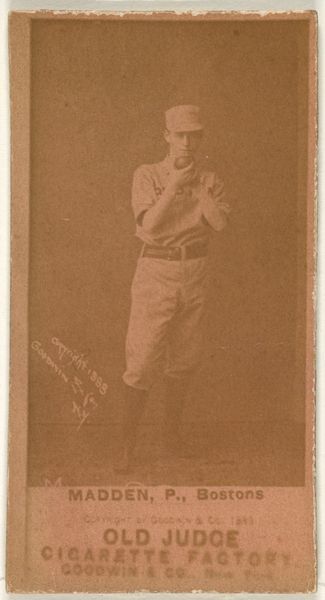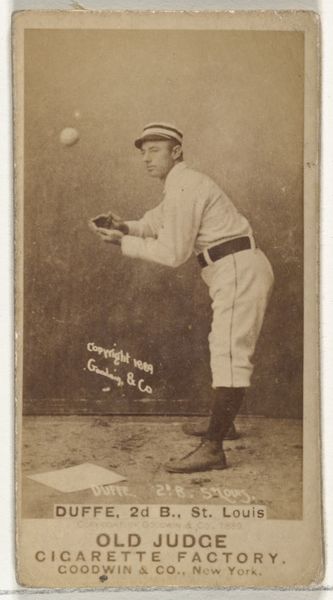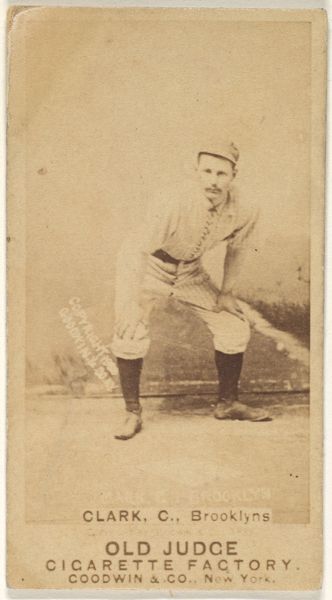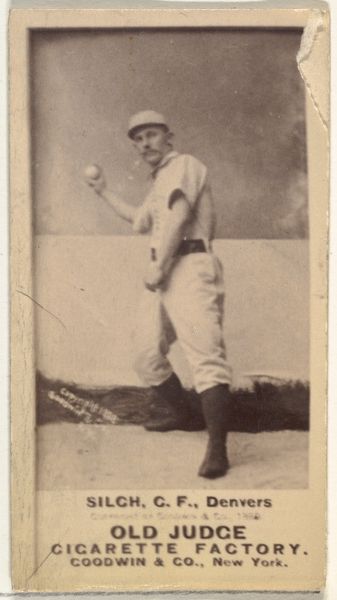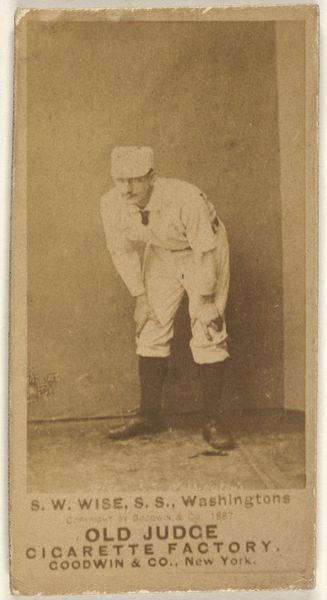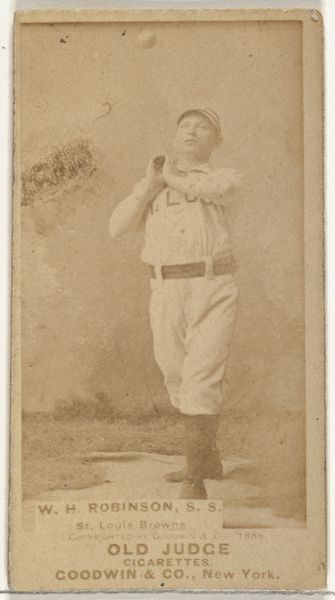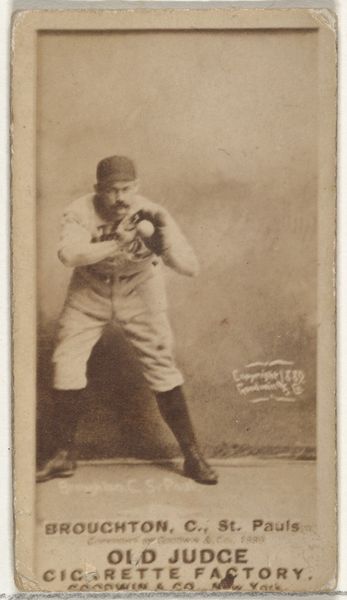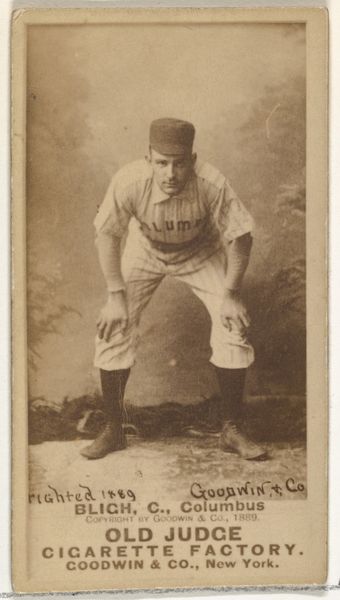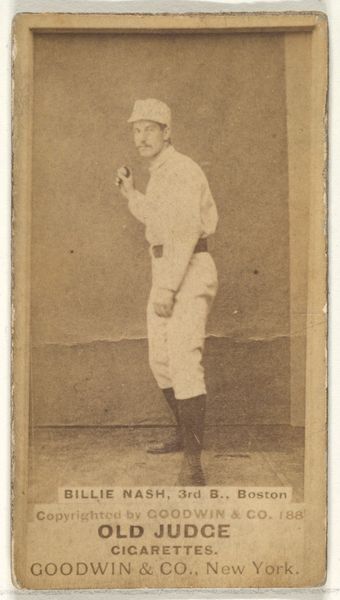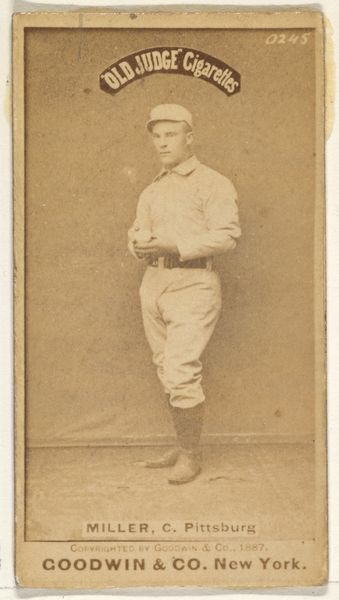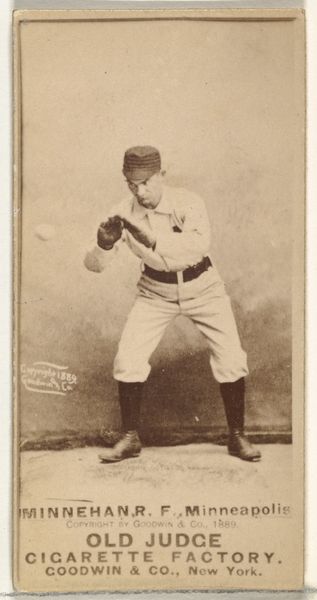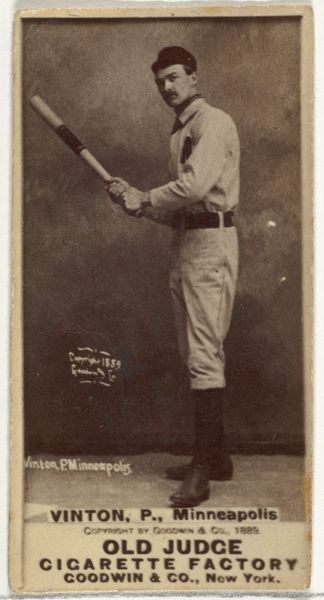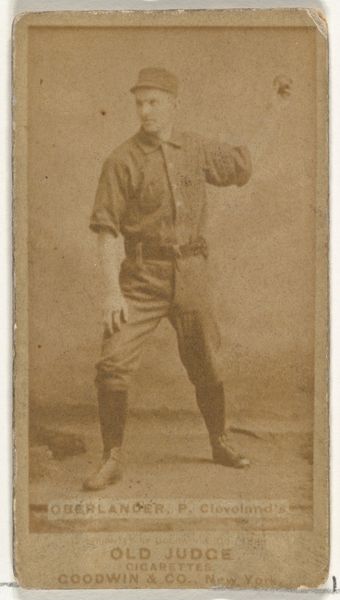
James J. "Sun" Daly, Left Field, Minneapolis, from the Old Judge series (N172) for Old Judge Cigarettes 1889
0:00
0:00
drawing, print, photography, albumen-print
#
portrait
#
drawing
# print
#
impressionism
#
baseball
#
photography
#
men
#
athlete
#
albumen-print
Dimensions: sheet: 2 11/16 x 1 3/8 in. (6.9 x 3.5 cm)
Copyright: Public Domain
Editor: Here we have an albumen print from 1889, a baseball card really, featuring James J. “Sun” Daly of Minneapolis. It’s part of the “Old Judge” series for Old Judge Cigarettes. The sepia tone and the player’s stiff pose make it seem very much of its time. I wonder, how do we contextualize this as an art object? Curator: Well, it's fascinating to see how something so ostensibly commercial became a collectible, an artifact, and now something hanging on the walls of The Met. These cards reveal much about the burgeoning cult of celebrity in the late 19th century, doesn’t it? But beyond that, what does the choice of a baseball player, instead of a general, or statesman, tell you? Editor: That sports are becoming more relevant than militarism or politics in the cultural imaginary. So these cards aren't *just* advertising. Curator: Exactly. Think of how the production and distribution of these cards intersect with wider historical trends, industrialization, mass media, the rise of consumer culture. Old Judge cigarettes used Daly's image to cultivate a specific image of athleticism, masculinity and "Americanness." How do those ideals stand up today? Editor: Probably pretty differently. The commercial imagery we're used to today is incredibly varied and hyper-specific. Curator: Precisely. This baseball card represents a crucial shift, where commercial imagery started reflecting – and shaping – public desires and ideals. And also who was explicitly and implicitly *excluded* from those ideals. What was "Old Judge's" demographic? Editor: Hmm, probably upper-middle class, white men. Now I'm starting to think differently about why this card is even in the Met. Curator: The journey of everyday objects like these to prestigious institutions speaks volumes about how our values shift and what stories we choose to tell about ourselves, wouldn’t you say? Editor: I see how examining even something as simple as a baseball card opens up a window onto an entire historical landscape.
Comments
No comments
Be the first to comment and join the conversation on the ultimate creative platform.
